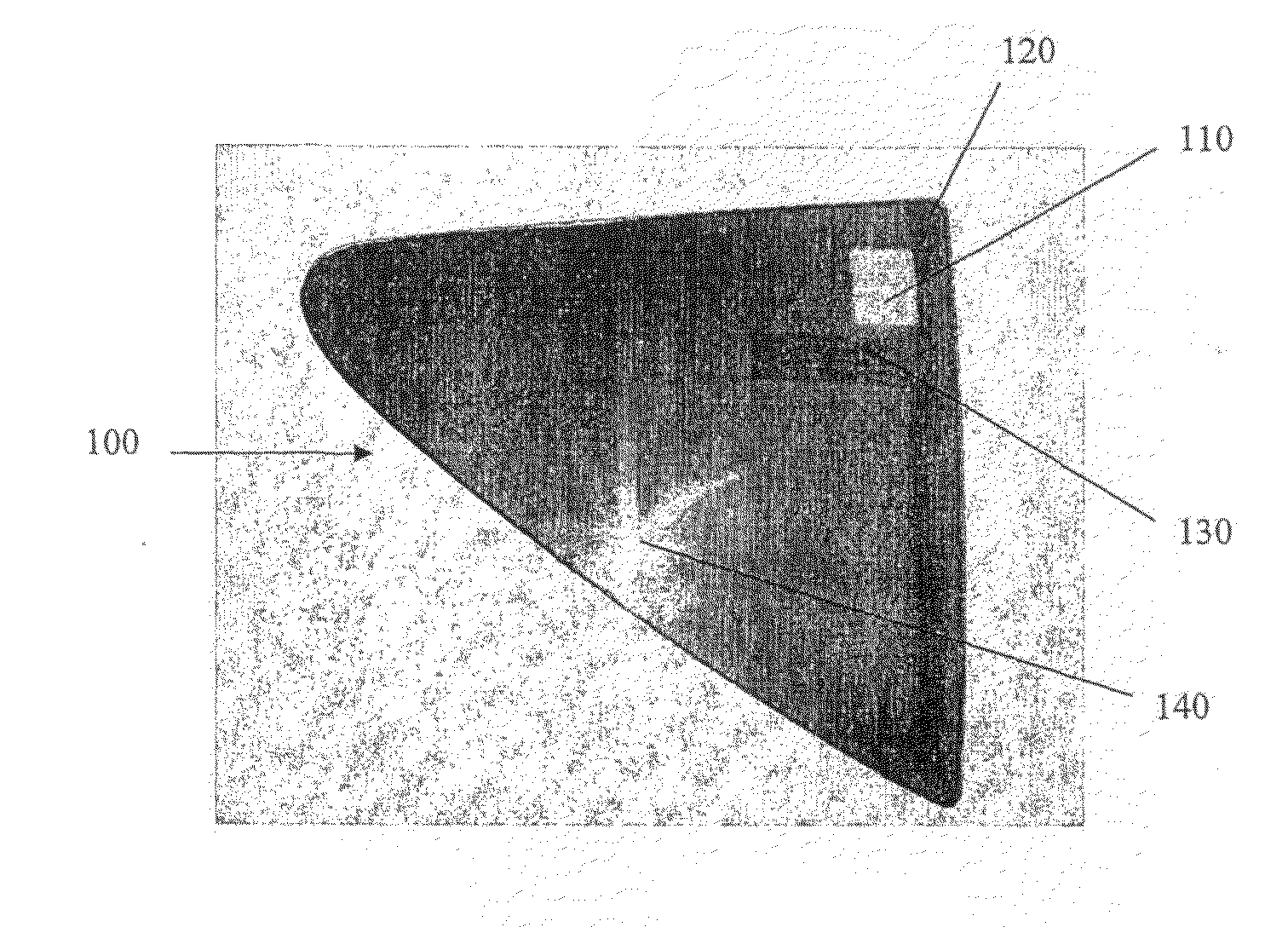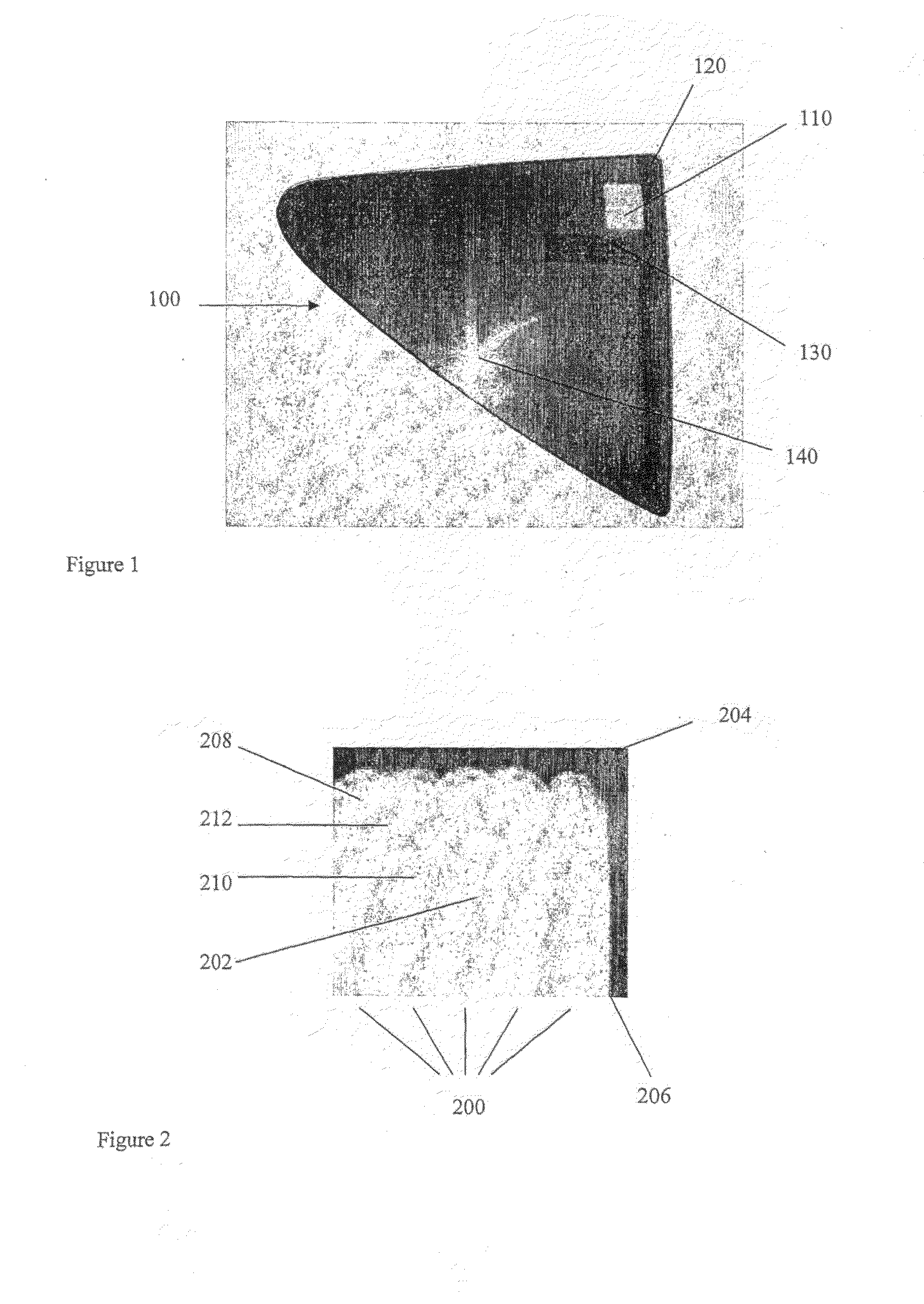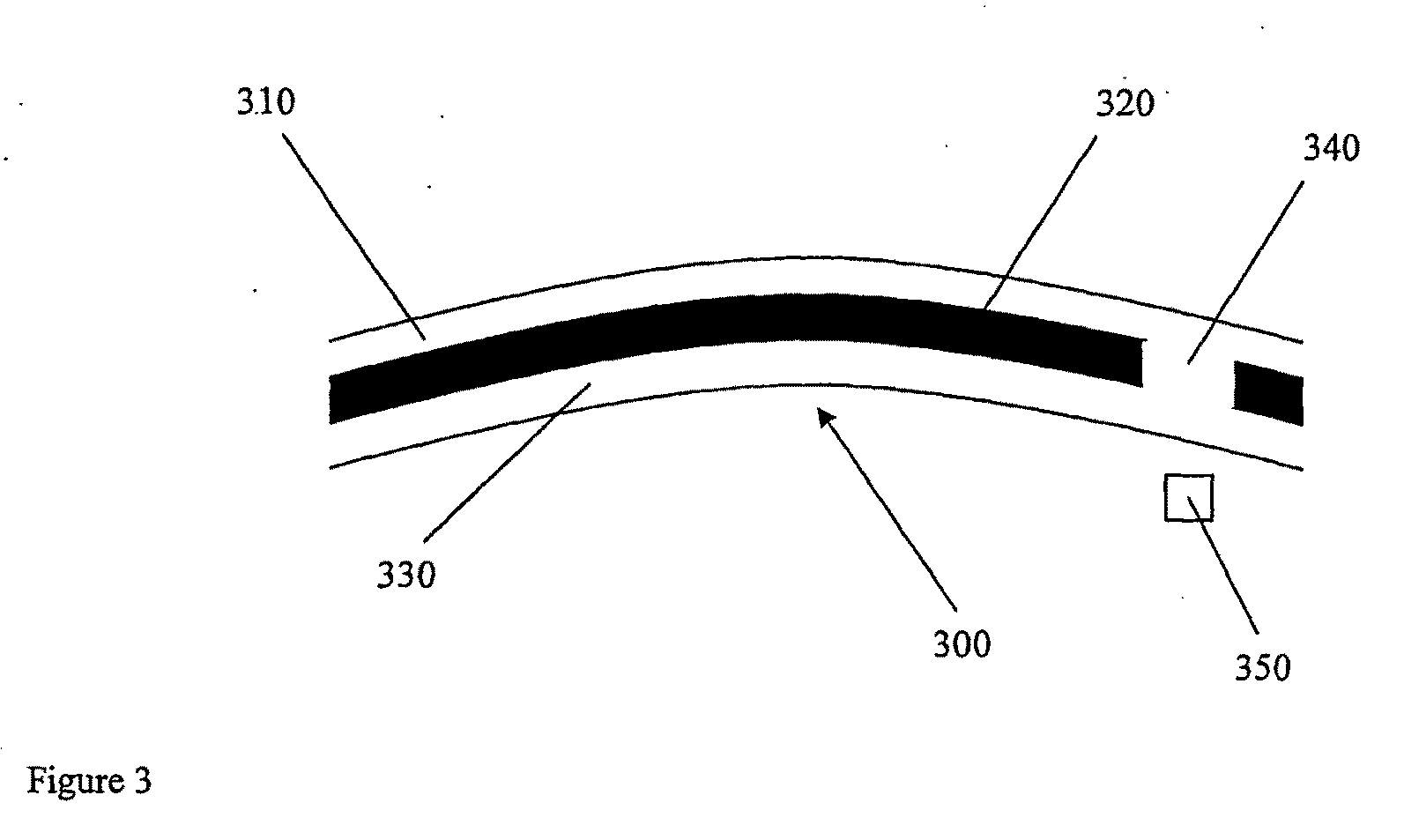Glazing
- Summary
- Abstract
- Description
- Claims
- Application Information
AI Technical Summary
Benefits of technology
Problems solved by technology
Method used
Image
Examples
Embodiment Construction
[0031]A glazing comprising a 0.76 mm charcoal grey PVB interlayer laminated between two outer pieces of 2.1 mm thick clear glass was used for initial testing.
[0032]Testing was performed using a solid state, pulsed laser. Such lasers are used in the removal of coatings from glass, such as described in US 2003 / 0075531, and typically operate at 532 nm with a nanosecond pulse time. The spot size, laser power level and pulse frequency are adjusted for the nature of the sample treated.
[0033]The sample was treated by scanning a region of the glazing with the laser beam. The laminated glazing may be held in a fixed position and the laser moved, the laser held in a fixed position and the glazing moved, or both moved, to achieve this scanning. The key point is that the laser is set up to move relative to the laminated glazing in a carefully controlled manner. Several parallel passes of the laser relative to the laminated glazing were made. This resulted in corresponding parallel tracks of the...
PUM
| Property | Measurement | Unit |
|---|---|---|
| Fraction | aaaaa | aaaaa |
| Fraction | aaaaa | aaaaa |
| Fraction | aaaaa | aaaaa |
Abstract
Description
Claims
Application Information
 Login to View More
Login to View More - R&D
- Intellectual Property
- Life Sciences
- Materials
- Tech Scout
- Unparalleled Data Quality
- Higher Quality Content
- 60% Fewer Hallucinations
Browse by: Latest US Patents, China's latest patents, Technical Efficacy Thesaurus, Application Domain, Technology Topic, Popular Technical Reports.
© 2025 PatSnap. All rights reserved.Legal|Privacy policy|Modern Slavery Act Transparency Statement|Sitemap|About US| Contact US: help@patsnap.com



